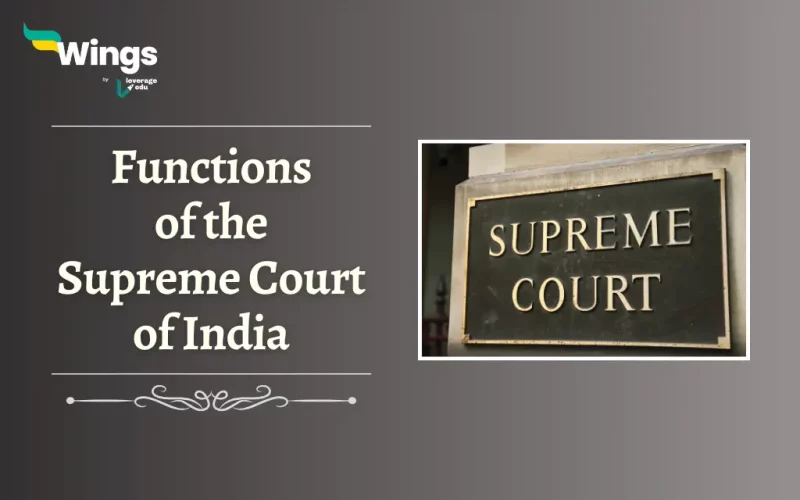The Highest Judicial Court of India is the Supreme Court of India. The Hon’ble Constitution of India defines the Supreme Court as the final court of appeal. Since India is a Federal State, it consists of a single and Unified System of Judiciary which has three tiers, the Supreme Court, High Courts, and Subordinate Courts. Furthermore, an enactment passed in pre-independent India led to the birth of the Supreme Court of India. So scroll through to learn the Functions of the Supreme Court of India.
| Jist about the Supreme Court of India | |
| Role | The Highest Appellate and Constitutional Court in India |
| Location | New Delhi |
| Year of Establishment | 1950 |
| Chief Justices | 4 (As of 2024) |
Also Read: Appointment of Judges of Supreme Court: A Guide
Functions of the Supreme Court of India
Additionally, the Supreme Court of India has to deal with a wide range of responsibilities like the following:
- It is the umbrella roof for settling all the cases related to various Government entities, the Federal government, and State governments.
- Supreme Court as the name suggests, is the supreme decision maker, in case of appeal from any of the High Courts.
- Article 141 of the Indian Constitution gives the Supreme Court the highest authority of the Judiciary and states that every court on the Indian territory must obey the decisions made by it.
- In certain cases, the Supreme Court is given the right to enact the independently throughout the case.
- In civil and criminal cases, the Supreme Court of India is the highest court of appeal.
Also Read: Know All About Article 370 and Article 35A
Moreover, these are the Functions of the Supreme Court of India. It consists of 34 judges along with the Chief Justice of India. In addition, for matters that include the Fundamental issues of law, there are benches of 2 or 3 called ‘Division bench’ or benches of 5 or more called ‘Constitutional bench.’
Related Blogs
This is all about the functions of the Supreme Court of India. For more content related to the different states of India, visit our Civics and Polity archives.
 One app for all your study abroad needs
One app for all your study abroad needs















 45,000+ students trusted us with their dreams. Take the first step today!
45,000+ students trusted us with their dreams. Take the first step today!
